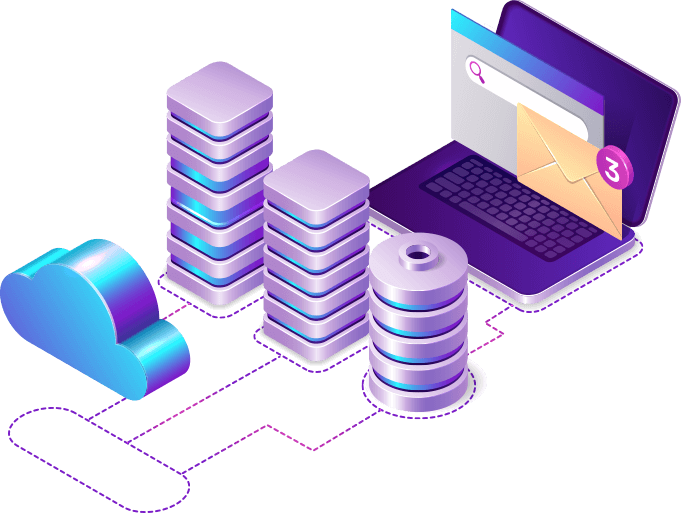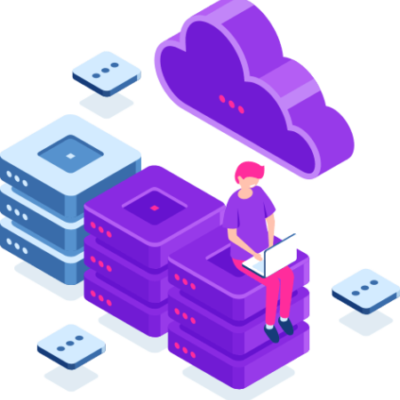SAP migration to the cloud is an important step for businesses that rely on the SAP software suite. It’s no longer enough to simply have an on-premise solution; businesses need to move to the cloud in order to take advantage of all the benefits it offers.
In this blog, I’ll discuss what SAP migration to the cloud is, the benefits of it, the common challenges associated with it, the pre-migration steps you should take, the different types of SAP migrations to the cloud, SAP S/4HANA cloud migration, SAP cloud services and SAP on the cloud, SAP migration tools and platforms, and finally, services for SAP migration to the cloud.
What is SAP Migration to the Cloud?
SAP migration to the cloud is the process of moving your existing SAP applications, databases, and systems to the cloud. This includes transferring your existing data and applications to the cloud, as well as setting up the necessary infrastructure and security controls to ensure the continued operation of these applications.
The cloud offers numerous advantages over traditional on-premise solutions. It’s more cost-effective, scalable, secure, and flexible. It also allows for faster deployment times, higher levels of data protection, and more frequent updates.
Benefits of SAP Migration to the Cloud
There are numerous benefits to migrating your SAP applications to the cloud. These include:
- Reduced Costs: Moving to the cloud can significantly reduce your IT costs. You’ll no longer need to purchase and maintain hardware and software, as the cloud provider takes care of this.
- Increased Scalability: With cloud-based solutions, you can easily scale up or down depending on your needs. This eliminates the need to purchase additional hardware or software and makes it easier to manage your resources.
- Enhanced Security: Cloud-based solutions are more secure than on-premise solutions. Your data is stored in secure data centers, and you can easily add additional layers of security to protect your data.
- Improved Performance: Cloud-based solutions are faster and more reliable than on-premise solutions. You’ll experience faster response times and fewer downtime incidents.
- Flexibility: Cloud-based solutions offer a great deal of flexibility. You can easily adjust your resources as needed, and you can access your data from anywhere.
Common Challenges of SAP Migration to the Cloud
While migrating to the cloud offers numerous benefits, there are also some common challenges associated with it. These include:
- Complexity: Migrating to the cloud can be complex, especially if you’re dealing with a large amount of data. It’s important to ensure that the process is managed properly to ensure a successful migration.
- Security: Security is always a concern with cloud-based solutions. It’s important to ensure that your data is secure and that the right measures are in place to protect it.
- Cost: While moving to the cloud can save you money in the long run, the upfront cost of migration can be expensive.
- Training: It’s important to ensure that your staff is properly trained to use the new system.
Pre-Migration Steps to Take
Before you begin the migration process, there are some important steps you should take to ensure a successful migration. These include:
- Establishing Goals: Establishing goals for the migration process is important. This will help you stay on track and ensure that the process is successful.
- Assessing Your Infrastructure: Assessing your existing infrastructure is important. This will help you identify any potential issues that you may encounter during the migration process.
- Identifying Your Resources: It’s important to identify your resources before you begin the migration process. This includes identifying the personnel, hardware, and software that will be needed.
- Preparing Your Data: Preparing your data for the migration is also important. This includes ensuring that your data is organized and up-to-date.
- Establishing a Timeline: Establishing a timeline for the migration process is important. This will help you stay on track and ensure that the process is completed on time.
Types of SAP Migration to the Cloud
There are several types of migrations to the cloud. These include:
- Direct Migration: This is the simplest and most cost-effective option. With a direct migration, you can move your existing SAP applications and data to the cloud without having to make any changes to your existing infrastructure.
- Hybrid Migration: This is a more complex option, but it can offer additional benefits. With a hybrid migration, you can move some of your applications and data to the cloud while keeping others on-premise. This allows you to take advantage of the scalability and cost-effectiveness of the cloud while still retaining control over certain aspects of your infrastructure.
- Cross-Platform Migration: This is the most complex option. With a cross-platform migration, you can move your SAP applications and data from one platform to another. For example, you could move from an on-premise solution to a cloud-based solution.
SAP S/4HANA Cloud Migration
SAP S/4HANA is SAP’s cloud-based enterprise resource planning (ERP) solution. It offers a wide range of features and capabilities that can help businesses streamline their operations and increase their efficiency.
Migrating to SAP S/4HANA can be complex, but it’s worth the effort. By migrating to SAP S/4HANA, you can take advantage of the many benefits it offers, such as improved performance, scalability, security, and flexibility.
SAP Cloud Services and SAP on the Cloud
SAP offers a number of cloud services that can help businesses take advantage of the cloud. These include SAP Business Suite, SAP Cloud Platform, SAP S/4HANA, SAP HANA, and more.
SAP on the cloud is an offering from SAP that allows businesses to access the SAP applications and services they need without having to purchase or manage hardware or software. With SAP on the cloud, businesses can take advantage of the many benefits of the cloud with minimal effort.
SAP Migration Tools and Platforms
When it comes to migrating to the cloud, there are a number of tools and platforms you can use. These include:
- AWS Database Migration Service: This is a service from Amazon Web Services (AWS) that helps you migrate your data to the cloud.
- Azure Database Migration Service: This is a service from Microsoft Azure that helps you migrate your data to the cloud.
- CloudEndure Migration: This is a service from CloudEndure that helps you migrate your data to the cloud.
- Google Cloud Database Migration Service: This is a service from Google Cloud that helps you migrate your data to the cloud.
- SAP Cloud Platform Migration Service: This is a service from SAP Cloud Platform that helps you migrate your data to the cloud.
Services for SAP Migration to the Cloud
There are a number of services available for SAP migration to the cloud. These services can help you migrate your existing data and applications to the cloud, as well as set up the necessary infrastructure and security controls.
Some of the services available include:
- Cloud Migration Services: These services will help you migrate your existing data and applications to the cloud.
- Cloud Security Services: These services will help you set up the necessary security controls to ensure the security of your data.
- Cloud Infrastructure Services: These services will help you set up the necessary infrastructure to ensure the continued operation of your applications.
- Cloud Monitoring Services: These services will help you monitor your cloud environment to ensure that everything is running smoothly.
Conclusion
SAP migration to the cloud is an important step for businesses that rely on the SAP software suite. It offers numerous benefits, including reduced costs, increased scalability, enhanced security, improved performance, and flexibility. However, it can be complex, and it’s important to take the necessary steps to ensure a successful migration.
Fortunately, there are a number of tools and services available to help you navigate the migration process. These include cloud migration services, cloud security services, cloud infrastructure services, cloud monitoring services, and more. By taking advantage of these services, you can easily navigate your SAP migration to the cloud.




